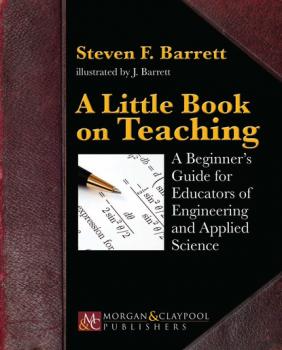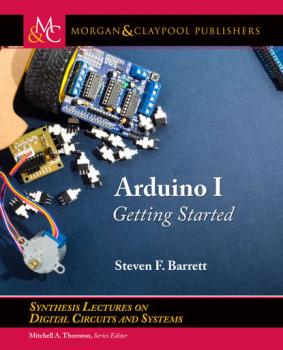Техническая литература
Различные книги в жанре Техническая литератураTopological Insulators
This book provides an introduction to topological matter with a focus on insulating bulk systems. A number of prerequisite concepts and tools are first laid out, including the notion of symmetry transformations, the band theory of semiconductors and aspects of electronic transport. The main part of the book discusses realistic models for both time-reversal-preserving and -violating topological insulators, as well as their characteristic responses to external perturbations. Special emphasis is given to the study of the anomalous electric, thermal, and thermoelectric transport properties, the theory of orbital magnetisation, and the polar Kerr effect. The topological models studied throughout this book become unified and generalised by means of the tenfold topological-classification framework and the respective systematic construction of topological invariants. This approach is further extended to topological superconductors and topological semimetals. This book covers a wide range of topics and aims at the transparent presentation of the technical aspects involved. For this purpose, homework problems are also provided in dedicated Hands-on sections. Given its structure and the required background level of the reader, this book is particularly recommended for graduate students or researchers who are new to the field.
Empowering Professional Teaching in Engineering
Each one of us has views about education, how discipline should function, how individuals learn, how they should be motivated, what intelligence is, and the structures (content and subjects) of the curriculum. Perhaps the most important beliefs that (beginning) teachers bring with them are their notions about what constitutes «good teaching». The scholarship of teaching requires that (beginning) teachers should examine (evaluate) these views in the light of knowledge currently available about the curriculum and instruction, and decide their future actions on the basis of that analysis. Such evaluations are best undertaken when classrooms are treated as laboratories of inquiry (research) where teachers establish what works best for them. Two instructor centred and two learner centred philosophies of knowledge, curriculum and instruction are used to discern the fundamental (basic) questions that engineering educators should answer in respect of their own beliefs and practice. They point to a series of classroom activities that will enable them to challenge their own beliefs, and at the same time affirm, develop, or change their philosophies of knowledge, curriculum and instruction.
Applied Digital Logic Exercises Using FPGAs
FPGAs have almost entirely replaced the traditional Application Specific Standard Parts (ASSP) such as the 74xx logic chip families because of their superior size, versatility, and speed. For example, FPGAs provide over a million fold increase in gates compared to ASSP parts. The traditional approach for hands-on exercises has relied on ASSP parts, primarily because of their simplicity and ease of use for the novice. Not only is this approach technically outdated, but it also severely limits the complexity of the designs that can be implemented. By introducing the readers to FPGAs, they are being familiarized with current digital technology and the skills to implement complex, sophisticated designs. However, working with FGPAs comes at a cost of increased complexity, notably the mastering of an HDL language, such as Verilog. Therefore, this book accomplishes the following: first, it teaches basic digital design concepts and then applies them through exercises; second, it implements these digital designs by teaching the user the syntax of the Verilog language while implementing the exercises. Finally, it employs contemporary digital hardware, such as the FPGA, to build a simple calculator, a basic music player, a frequency and period counter and it ends with a microprocessor being embedded in the fabric of the FGPA to communicate with the PC. In the process, readers learn about digital mathematics and digital-to-analog converter concepts through pulse width modulation.
A Little Book on Teaching
It is often a challenging and overwhelming transition to go from being a student to being a teacher. Many new faculty members of engineering and science have to make this dramatic transition in a very short time. In the same closing months of your Ph.D. program you are trying to complete your research, finish and defend your dissertation, find a job, move to a new location, and start a new job as a faculty member. If you are lucky, you've had the opportunity to serve as a teaching assistant and possibly have taught a university-level course. If you have served as a research assistant, your teaching opportunities may have been limited. Somehow, in this quick transition from student to teacher, one is supposed to become a good teacher and be ready for the first day of school.
This book is intended as a basic primer on college-level teaching and learning for a new faculty member of engineering and applied science. New faculty members in other disciplines will find much of the information applicable to their area of expertise as well. First and foremost, this book is about learning and teaching. However, it also provides helpful information on related topics such as mentorship, student challenges, graduate students, tenure, and promotion and accreditation.
This book is also intended as a reference for seasoned professionals. It is a good reference for those mentoring the next generation of college educators.
Table of Contents: List of Figures / What makes a Great Teacher? / A little learning theory / Preparation for the first day of classes / Assessment / Beyond the first day
Gärten inspiriert von der Natur
Das Buch „Planting the Natural Garden“ erschien 2003 (als deutsche Ausgabe 2005 bei DVA unter dem Titel „Meine Lieblingspflanzen“, 144 Seiten) und war das erste Standardwerk zum Thema naturnahes Gartendesign. Es löste seinerzeit eine wahre Revolution in der Landschaftsgestaltung aus, das „New Perennial Movement“, die den Weg für neue, moderne, natürlich wirkende Pflanzungen unter überwiegender Verwendung von Stauden und Gräsern (ohne Einjährige und mit wenig Gehölzen) bereitete.









